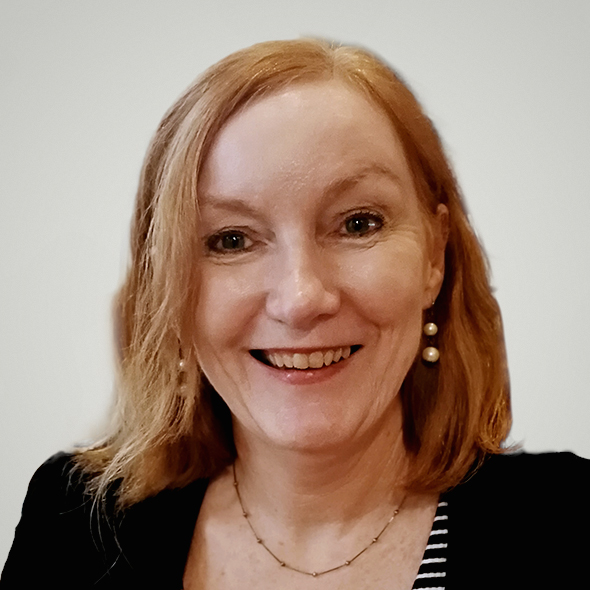A recent AICD event was told that Australian boardrooms need to work harder and in more targeted ways to recruit the growing pool of First Nations talent available for boards.
Rachelle Towart OAM, Managing Director, Pipeline Talent & Dreamjobz, told the AICD’s Communities of Practice Forum in September that despite decades of Reconciliation Action Plans, the boardroom door remains closed to many First Nations leaders.
Out of all directors across the ASX300 companies, only five are known to be Aboriginal or Torres Strait Islander — ess than one per cent - despite First Nations people making up 3.8 per cent of the population. By contrast, around 40 per cent of directors are now women, showing how quickly representation can shift when there is real intent.
With pathways to leadership and ultimately to board roles having mixed success, boards must actively seek to recruit First Nations talent beyond a tokenistic approach.
Appointing First Nations leaders to advisory boards is not enough, she warned.
“Many Indigenous leaders sit on advisory boards. But these roles have no fiduciary responsibility or decision-making powers. Advisory roles are voices without vote. They reinforce the tokenism.
“Too often, organisations invite First Nations persons to an advisory board as the way of appearing inclusive without creating a seat at the decision-making table.”
What Boards Must Do Differently
While aspiring directors can prepare, the responsibility for change also sits with boards. Towart urges boards to:
- Set explicit parity targets for board and executive appointments.
- Partner with First Nations-led search firms to broaden their candidate pools.
- Mandate diverse longlists and use structured, transparent selection processes.
- Offer governance education and mentoring as part of onboarding, not just pre-recruitment.
- Ensure cultural safety in the boardroom — from welcoming protocols to valuing cultural knowledge.
- Avoid tokenism — give Indigenous directors meaningful portfolios, not just symbolic roles.
- Recognise cultural load — reflect it in board workloads and director fees.
- Establish observer programs and succession plans to build continuity.
When candidates are interviewing for a board role, they can and should ask boards about these practices. A culturally safe, supportive board will be proud to answer, she says.
Building Board Readiness: Skills, Education and CVs
So if you are a First Nations board candidate, how do you start your journey to a board seat?
There are some proven pathways, and the AICD’s First Nations Director Scholarship Program 2026 is an “excellent example of combining governance education with mentoring and networks”, says Towart.
1. Governance education is critical
Completing governance training — such as the AICD Company Directors Course or the AICD First Nations Director Scholarship — is often a turning point. It gives you a recognised credential, builds your understanding of board responsibilities, and signals to recruiters and nomination committees that you are serious and board-ready.
2. Build your board CV
A board resume is different from an employment CV. It should highlight your strategic experience, risk oversight, financial literacy, stakeholder engagement and cultural governance strengths. It must show how your skills contribute to boardroom decision-making. Many leaders benefit from mentoring to help frame their achievements in “board language”.
3. Gain stepping-stone experience
Consider joining not-for-profit boards, audit and risk committees, or local advisory committees as an entry point. These roles build your governance skills and networks — but they should be stepping stones, not dead ends. Make sure you are aiming ultimately for full board director roles, not just advisory seats.
4. Seek mentoring and sponsorship
Being paired with an experienced chair or director can open doors and offer invaluable guidance. Mentors can also help you navigate board culture, networks and expectations.
Pathways and Platforms: How to Get Noticed
One of the biggest challenges is simply visibility. Many First Nations leaders are highly capable but not on the radar of mainstream recruiters. New Indigenous-led initiatives are changing this:
- Pipeline Talent — Australia’s only 100 per cent First Nations-owned executive search firm — has created one of the largest registers of board-ready Aboriginal and Torres Strait Islander candidates. A recent recruitment round for the National Indigenous Australians Agency (NIAA) attracted hundreds of strong candidates, proving the talent is out there. Another advisory board role for Woolworths with $60,000 remuneration also attracted 380 applications.
- MobConnects — a soon-to-launch blind profiling platform from Pipeline Talent — will allow boards to search for Indigenous directors by location, skills and credentials without bias.
- Dreamjobz — a culturally safe jobs platform created after ongoing online racism toward Indigenous jobseekers. It has already attracted over 7,000 registered jobseekers and 500 job ads since launch, including partnerships with Coles, Bupa, HESTA, Woolworths and Wilson Security.
Platforms like these help break the “old boys’ club” model of board recruitment. They give boards access to candidates they would otherwise never see.
Understanding the Barriers: Why the Pipeline Is Broken
The reasons for lack of First Nations representation in boardrooms are systemic and multifaceted:
- Narrow networks: Most board recruitment relies on existing director circles. If you are not in those circles, it’s hard to break in.
- The experience loop: Candidates are told they need board experience to be appointed — yet can’t get experience until someone takes a chance on them.
- Lack of access to governance education: Many talented Indigenous leaders are deemed “not board ready”, simply because they have never been offered governance training.
- Cultural load: The community responsibilities Indigenous leaders carry are often not understood or valued by mainstream boards, yet they bring enormous strengths.
The result is a broken pipeline from middle management through to senior executive and board roles. According to the Mindaroo Indigenous Employment Index (2022), First Nations people hold only 0.07 per cent of senior management and executive roles in major employers, despite these organisations collectively employing over 700,000 people.
Until this broken pipeline is repaired, boards will continue to tap the same narrow networks and overlook strong First Nations candidates, said Towart.
Latest news
Already a member?
Login to view this content



.jpg)